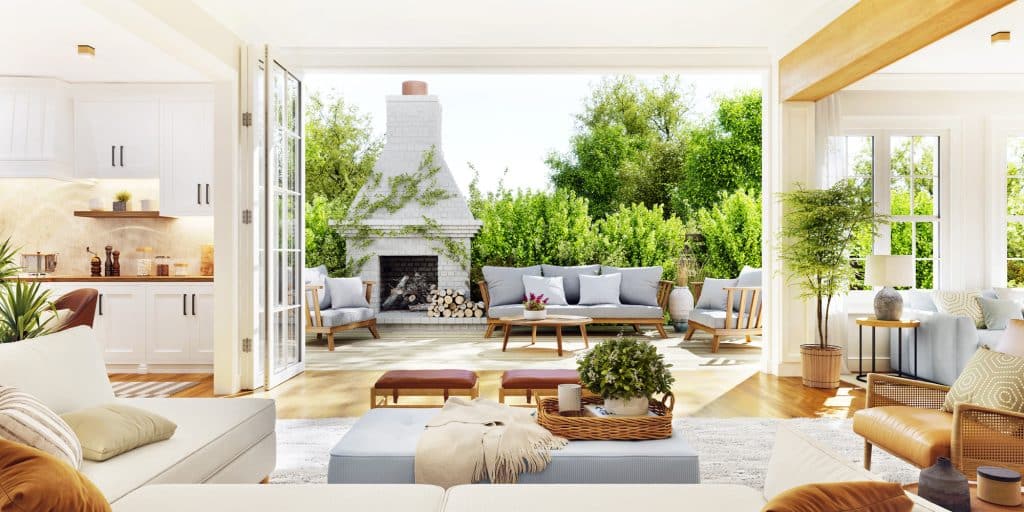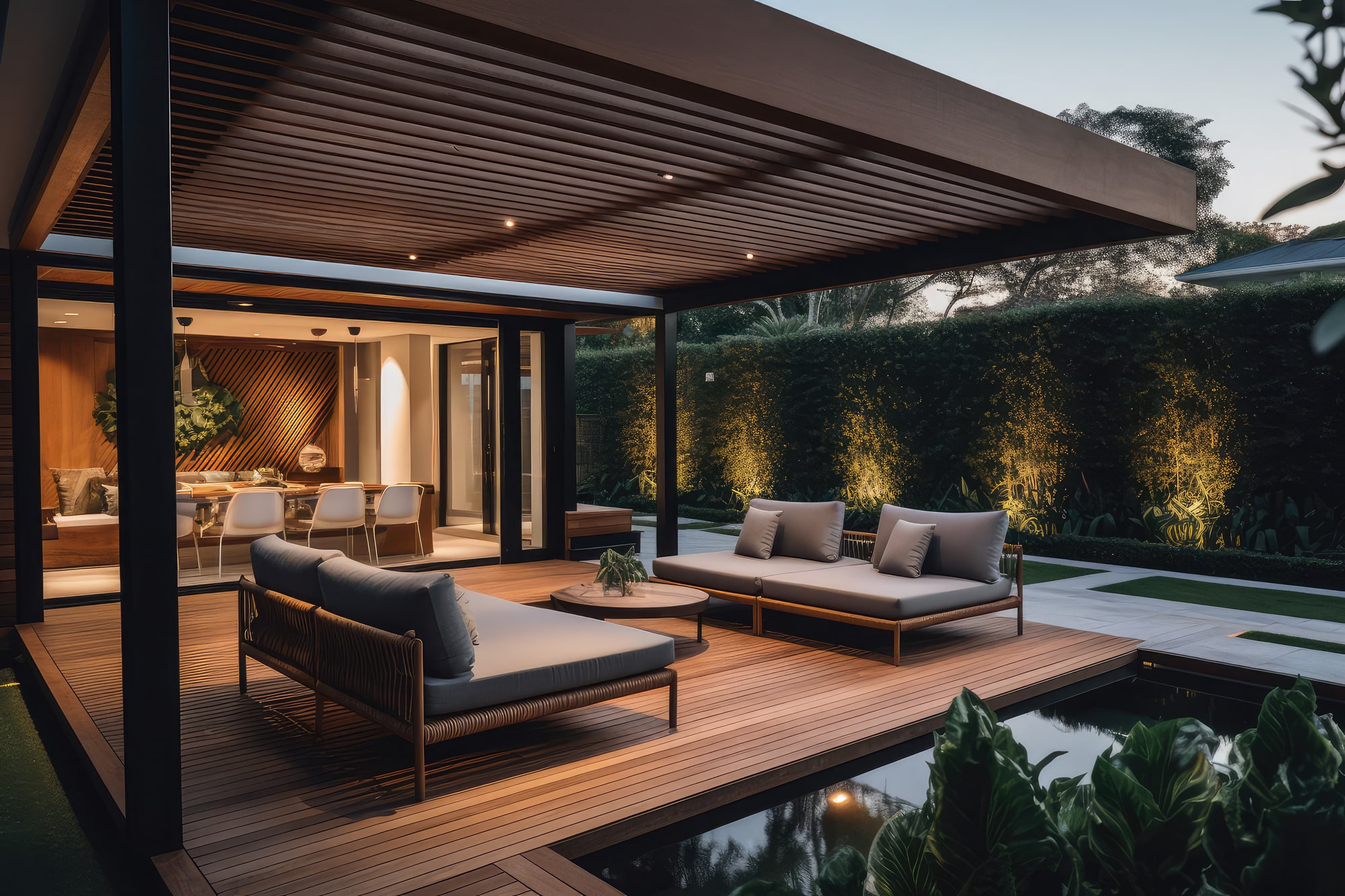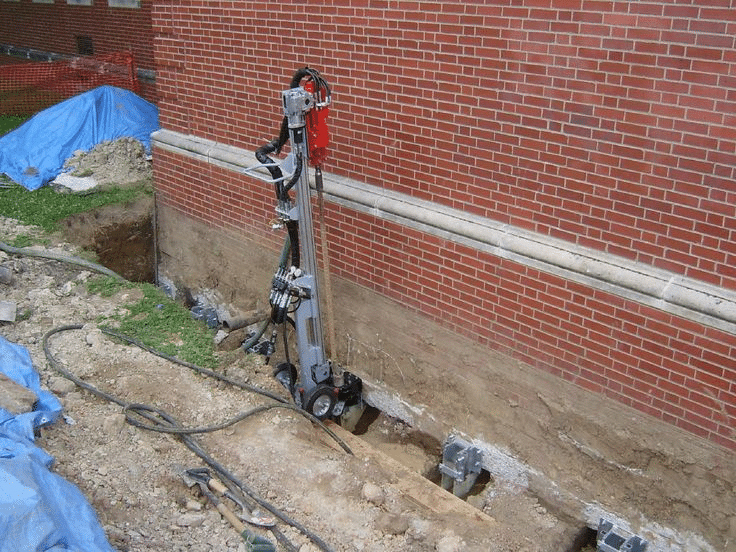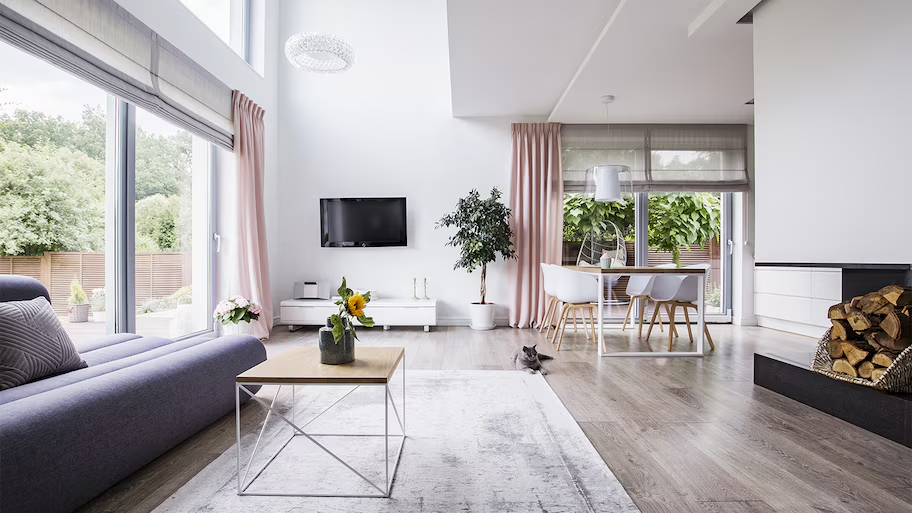From Inside Out: Tips For A Seamless Indoor-Outdoor Connection
Ever dreamt of a home where the transition between indoor and outdoor spaces is virtually invisible? Where the inside and the outside merge seamlessly, creating a unified, harmonious living experience?
Establishing such a connection not only elevates aesthetic appeal but also enriches your overall living experience, allowing you to enjoy the richness of nature from the comfort of your living room. Creating this symbiotic relationship between your home’s interior and the surrounding environment necessitates thoughtful design, incorporation of the right elements, and a deep understanding of blending the constructed with the natural.
In this exploration, discover a series of insights and tips designed to foster integration, amplifying the ambiance, functionality, and aesthetic cohesion of living spaces.
Optimize The Flooring Transition
To start creating a seamless connection, focus on the ground. Consider extending the indoor flooring to your outdoor spaces. For instance, using TimberTech decking supports a harmonious flow with its consistent and aesthetic design. It enhances visual continuity and provides durability to ensure the longevity of the connection.
Moreover, maintaining a consistent flooring level is crucial. Make sure there’s the same level between indoor and outdoor floors to avoid steps or barriers. This promotes a continuous, unhindered flow and enables the eye to travel freely from inside to outside.
Invest In Quality Windows And Doors
The right choice of doors and windows is pivotal for merging interior and exterior spaces. Opting for Marvin windows, for instance, integrates high-quality, visually appealing windows that offer clarity and durability. They provide not just a glimpse of the world but a transparent, enduring link to the outdoors, heightening the seamless experience.

Incorporating large, sliding glass doors removes the barrier between indoor and outdoor spaces, allowing uninterrupted views and easy access between the two areas. These elements significantly contribute to merging boundaries and creating a sense of unity and expansiveness.
Harmonize Design Elements
For true unification of indoor and outdoor spaces, harmonize design elements. Select complementary colors, textures, and materials for both areas to foster visual continuity and achieve a cohesive, integrated look.
You can enhance the sense of continuity by incorporating matching furniture styles, plants, and décor in both spaces. Design elements that resonate with each other establish a rhythmic flow, creating a more interconnected, unified environment.
Utilize Natural Light
Harnessing natural light is paramount in fostering a seamless indoor-outdoor connection. Place windows, skylights, and glass doors strategically to allow natural light to fill your living spaces, brightening every corner. This elevates the mood and ambiance while fostering a sense of openness and connection with the outdoors.
Additionally, consider light fixtures that complement natural light and add to the overall aesthetic of your spaces. Cohesive lighting strategies for both indoor and outdoor spaces ensure a balanced, harmonious atmosphere, reinforcing the seamless connection.
Plan Your Landscape Thoughtfully

Image Source: John Knight Glass aluminium window and door specialist.
Landscaping goes beyond beautifying the exterior; it’s about extending the interior ambiance to the outdoors. Consider your garden, patio, or backyard natural extensions of your indoor space. Integrate plants and features that match your interior décor and color scheme to create a cohesive visual narrative.
Strategically arrange outdoor elements to mirror the indoor layout and enhance visual connection. This strategic placement fosters a fluid flow from inside to outside, creating a unified, well-thought-out living space.
Integrate Outdoor Elements Indoors
Including outdoor elements indoors enhances the connection between the two spaces. Integrate indoor plants, water features, and natural materials such as stone and wood to reflect the outdoors inside. This fosters a balanced relationship between your indoor and outdoor environments.
Select furnishings and décor that mirror the natural environment to enhance overall harmony and continuity. This balanced incorporation blurs the boundaries between inside and outside, reinforcing unity and coherence.
Opt For Open Layouts
Create adaptable and multifunctional spaces to facilitate more flexible interactions between indoor and outdoor areas. This flexibility smooths transitions and caters to different needs and preferences.
Open layouts significantly contribute to the seamless integration of indoor and outdoor spaces. Eliminate unnecessary walls and partitions to create expansive, flowing spaces. This approach enhances continuity, allowing for uninterrupted interaction with the outdoor environment.
Conclusion
Crafting a seamless indoor-outdoor connection extends beyond aesthetic appeal; it’s about forging a harmonious living experience that merges the built and natural environments.
By optimizing flooring transitions, investing in quality windows and doors, harmonizing design elements, harnessing natural light, planning landscapes thoughtfully, integrating outdoor elements indoors, and opting for open layouts, you enable a fluid, coherent transition between indoor and outdoor spaces.
Incorporating elements like TimberTech decking and Marvin windows is crucial in achieving this connection, offering durability and aesthetic cohesion. By implementing these tips, you can enhance the visual continuity and functional flow between different spaces, elevating the overall living experience and bringing the richness and tranquility of the outdoors into everyday life.








One Comment